My Son Sanctuary in Vietnam is an ancient Hindu temple complex built by the Cham people. Located near Hoi An and Da Nang, it's a UNESCO World Heritage Site that showcases the unique history and architecture of the Champa Kingdom.
1. History of My Son Sanctuary and the Cham Civilization
My Son Sanctuary stands as a testament to the rich cultural heritage of the Cham civilization, which thrived between the 4th and 13th centuries. The Cham, of Malay-Polynesian descent, established a powerful kingdom spanning parts of present-day Vietnam and Cambodia, with its capital centered around the area of My Son Sanctuary.
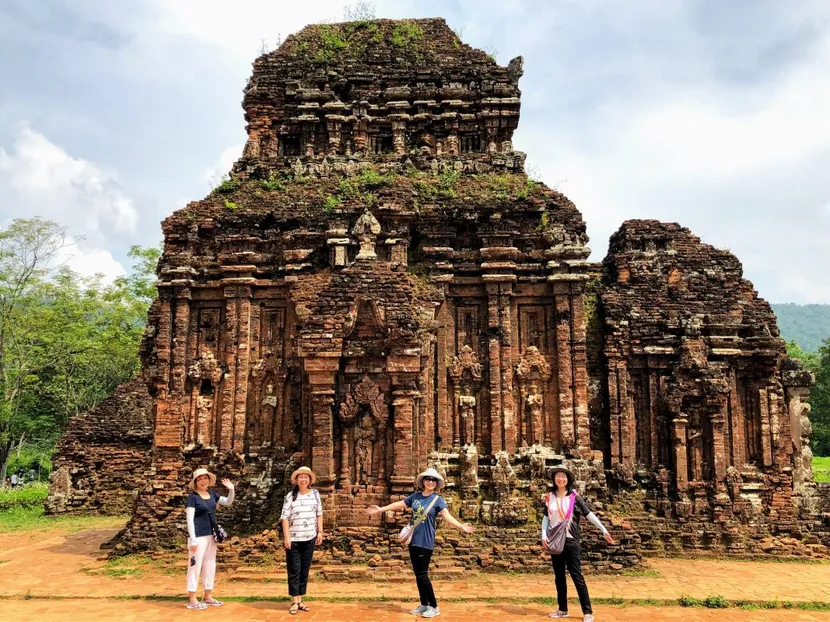
My Son Sanctuary is a fascinating and significant site that offers a glimpse into the rich history and culture of the Champa civilization.
The Cham people chose the strategic location of My Son due to its elevated geological basin, encircled by mountains, which served as the source of the sacred Thu Bon River. This river flows through the monument complex, exits the basin, passes through the historical heart of the Champa Kingdom, and eventually empties into the East Sea near the ancient port of Hoi An.
The My Son holy land complex originally featured over 70 temples, towers, and other monuments, each showcasing unique architectural styles that reflect different historical periods of the Champa Kingdom. These structures were primarily built to worship the Hindu god Shiva.
Sadly, the site was abandoned following the invasion by the ancient Dai Viet Kingdom. It was not until 1898 that a group of French explorers visited Vietnam and conducted archaeological excavations at My Son. Today, only 32 towers remain, with 20 still preserved in their original state.
Despite its decline, the Cham civilization left behind a legacy of advanced architecture and refined artistry. My Son Sanctuary remains a cultural relic imbued with deep artistic and historical value—an embodiment of the wisdom and essence passed down through generations.

The My Son Sanctuary complex was once home to more than 70 temples and towers.
2. Architecture and symbolism of My Son Temples
The architecture of My Son Sanctuary is deeply influenced by Hinduism, reflecting both spiritual symbolism and the cultural identity of the Cham people who once inhabited the region. Every structure within the complex was carefully designed with religious and philosophical meaning.
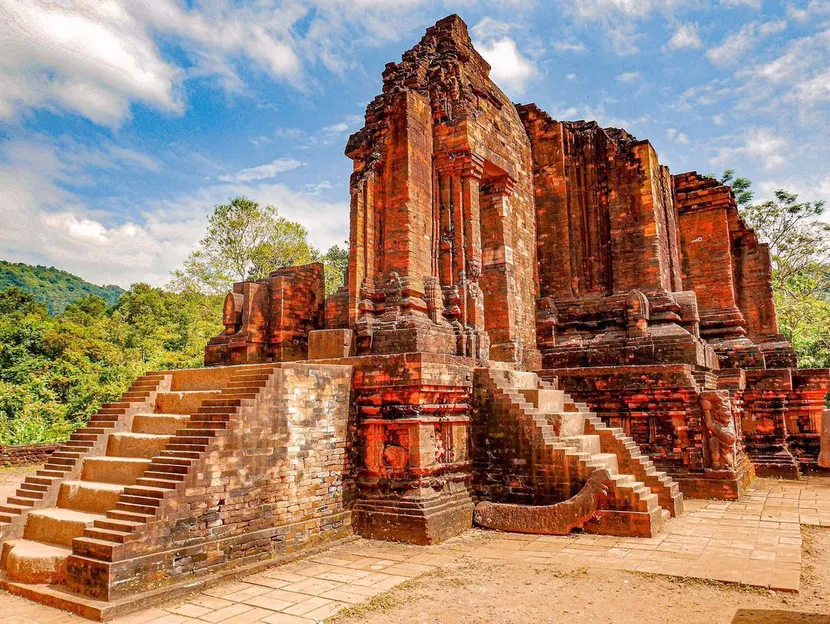
The architecture of the My Son Sanctuary is heavily influenced by Hinduism, carefully calculated and imbued with the rich culture of its inhabitants
The temples and towers showcase diverse architectural styles, many of which are intended to represent Mount Meru—the mythical sacred mountain in Hindu cosmology believed to be the center of the universe and the dwelling place of the gods. Built from fired brick and reinforced with stone pillars, the structures are adorned with sandstone reliefs illustrating scenes from Hindu mythology, particularly stories related to deities such as Shiva. Each temple or tower is dedicated to a specific god or ruling dynasty, making the entire site a historical tapestry that narrates the spiritual and political evolution of the Champa Kingdom. Most of the buildings are oriented to the East, symbolizing reverence for the rising sun—a direction traditionally associated with divinity and enlightenment in Hindu belief.
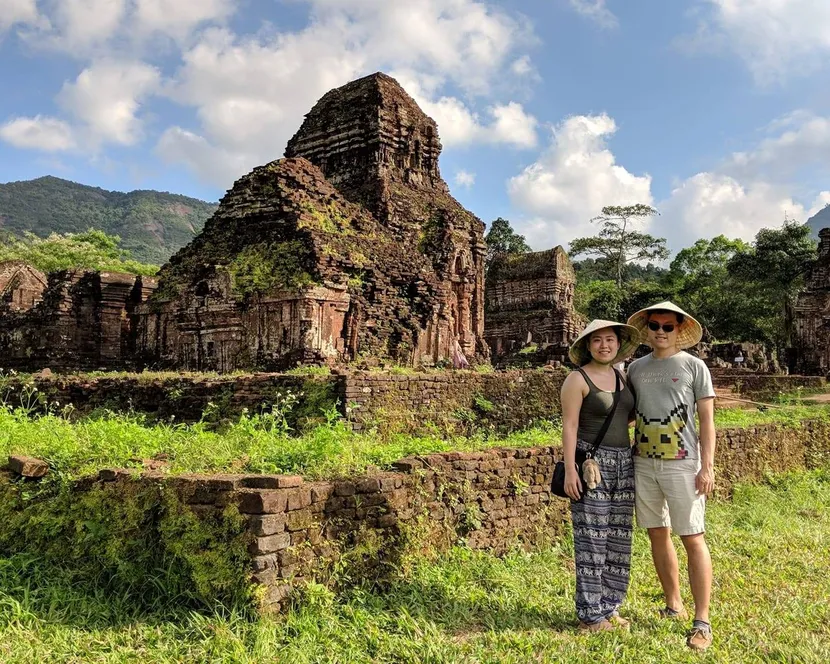
My Son temples and towers mainly face the East - the direction of the rising sun and the abode of the gods
The technological sophistication of the structures is proof of the technical skill of the Cham people, while the intricate images and symbols of the temples and towers provide insight into the content and development of thought, religion, and politics of the Cham people.
The technological precision evident in the construction methods, especially the enduring brickwork without mortar, demonstrates the advanced engineering skills of the Cham people. Meanwhile, the elaborate carvings and symbolic motifs provide valuable insight into their evolving religious practices, artistic sensibilities, and societal structures.
The sanctuary is divided into three main zones:
- Zone A: The central area where visitors can view the largest and most prominent cluster of temples and towers.
- Zone B: Located on a western hill, this area features one main tower and three smaller auxiliary towers.
- Zone C: Situated on a southern hill, this zone houses a concentration of temples, towers, inscriptions, sculptures, and intricate reliefs
However, archaeologically, the site is divided into several architectural groups, typically labeled Groups A, B, C, D, E, F, G, and H, based on their discovery and layout. These groupings were established during archaeological surveys by French archaeologists in the late 19th and early 20th centuries, and each group represents different periods of construction and artistic evolution within the Champa Kingdom.
Group A, once the most important and majestic section of the complex, contained the main temple (Kalan A1), dedicated to Shiva-Bhadresvara, the protector deity of the Champa kings. This group was heavily damaged during American bombings in the Vietnam War (especially in 1969); many structures were destroyed.
Group B and Group C are located on the western side of the sanctuary, elevated on a hill. While Group B features one main tower (Kalan B1) and three auxiliary towers, Group C includes several smaller temples and detailed carvings. These are among the best-preserved areas, showcasing the Champa's signature bricklaying techniques without mortar. Today, they are carefully conserved and restored, making them popular for visitor access.
Group D used to serve as a secondary worship complex, possibly used by elite or royal figures. It features stone pedestal remains, parts of Linga–Yoni worship structures, and foundations of smaller shrines.
Group E, F, and G scatter farther across the sanctuary landscape, requiring longer walking routes. Group E and F are modest in size but include pediments, sculptures, and inscriptions in ancient Cham and Sanskrit. Group G contains notable lintels, false doors, and traces of stucco decoration. These areas represent the later phases of Cham temple construction, possibly when the kingdom was in decline.
Group H has been archaeological focus recently, not open to all visitors. This group showcases rare ritual objects, stone sculptures, and epigraphic materials, offering insights into regional variation and lesser-known architectural experimentation.
3. Cultural significance of My Son Sanctuary Vietnam
3.1. The Champa civilization and their beliefs
The My Son temples hold a significant place in the religious practices of the Cham people. These sacred structures were believed to serve as a bridge between the human world and the realm of the gods. Within their walls, the Cham conducted elaborate rituals to seek divine blessings and protection.

Visitors pay a visit to the ruined temples.
The intricate sculptures adorning the temples offer compelling evidence of the Cham people's deep spiritual devotion. Carved in stone, these artworks depict scenes from Hindu mythology, celestial beings, and everyday life. Through these carvings, Cham artisans masterfully expressed the essence of their culture, leaving behind an artistic legacy that continues to captivate modern visitors.
The temples of My Son stand as a powerful testament to the Cham’s rich cultural heritage and their unwavering faith in the divine. These monuments not only celebrate ancient beliefs but also serve as a poignant reminder of the importance of preserving cultural and religious traditions for future generations to value and cherish.
3.2. Recognitions for My Son Sanctuary
My Son Sanctuary was granted the prestigious title of UNESCO World Heritage Site in 1999, in recognition of its exceptional architectural value and the rich cultural heritage of the Cham civilization, as well as its profound spiritual significance.
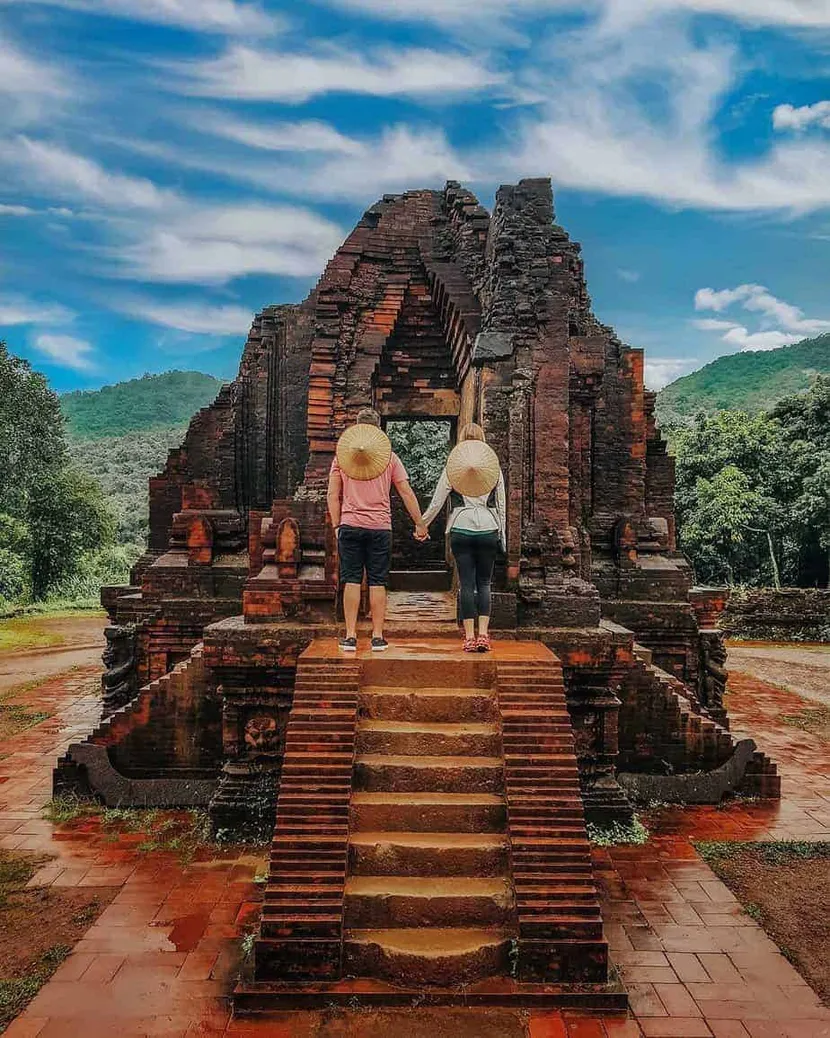
In 1999, UNESCO bestowed the esteemed designation of World Heritage Site upon My Son Sanctuary
In addition, the renowned travel publication Lonely Planet has highlighted the site's magnificence by including My Son in its list of the “15 Best Things to Do in Vietnam”. The magazine describes My Son as a stunning complex of red-brick temples and towers near Hoi An that offers a rare glimpse into the architectural achievements of the Champa civilization, preserved through centuries of history.
These accolades, both national and international, have played a vital role in raising awareness of the importance of preserving this invaluable historical treasure. It is our collective responsibility to ensure that My Son Sanctuary remains protected, so that it can continue to inspire, educate, and connect future generations with the spiritual and architectural legacy of the Cham people.
3.3. Restoration efforts
During the war, bombings caused significant damage to several temples at My Son Sanctuary, creating a need for restoration and conservation. In addition to the devastation of conflict, the site has also suffered from the natural effects of time and weathering.
To safeguard this cultural treasure, both Vietnamese and international organizations have undertaken extensive restoration efforts. This delicate process involves meticulous research, architectural analysis, and the application of traditional materials and techniques to ensure historical accuracy. Ongoing conservation work focuses on preserving the site's authenticity while ensuring its long-term sustainability.
Today, My Son Sanctuary stands as a powerful symbol of the resilience of Vietnam’s cultural heritage. Despite the challenges it has faced, this ancient site continues to inspire awe and wonder in visitors from around the world.
4. Visiting My Son Sanctuary
4.1. My Son's location and opening hours
My Son Sanctuary is a must-visit destination for anyone traveling to Central Vietnam (Hoi An and Da Nang, etc.)
Opening hours are from 6:00 AM to 5:00 PM daily, including holidays and New Year's Eve.
Covering a vast area of 1,158 hectares, a full visit can take several hours, so it’s best to arrive early to make the most of your experience.
The entrance fee is 150,000 VND (approximately US$6.43) per person. This ticket includes access to both the My Son Sanctuary and the Champa Museum, as well as a 2 km electric shuttle ride to the main temple area.
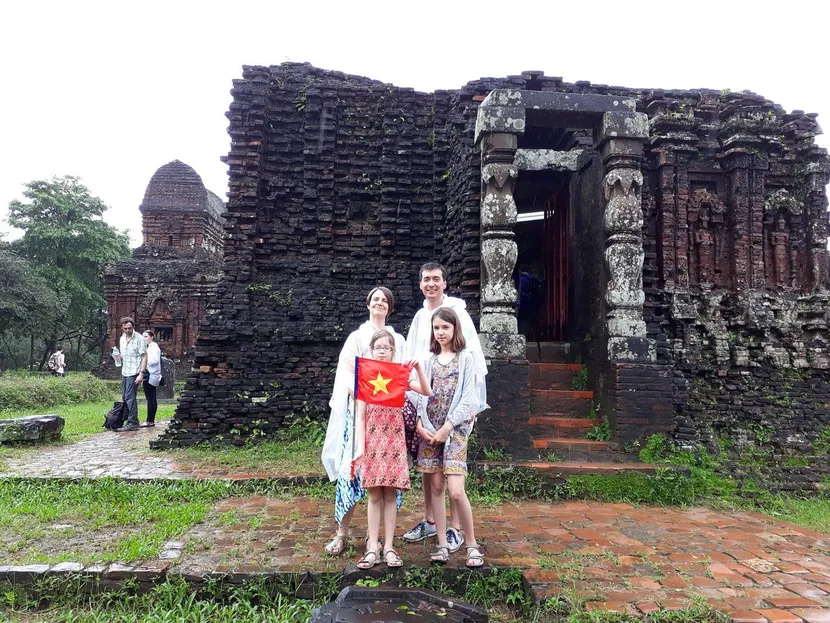
My Son Sanctuary is easily accessible by road from Hoi An and Da Nang
Discover Central Vietnam Itinerary
4.2. Cultural performances and events at My Son Sanctuary
My Son Sanctuary is a vibrant hub of cultural activities that celebrate the rich heritage of the Cham people. Among the most captivating experiences are the Katê Festival and the Apsara dance, both of which highlight the spiritual and artistic traditions of the Cham civilization.
The Katê Festival is a grand celebration held amid the breathtaking backdrop of My Son's ancient temples. Visitors can witness a variety of cultural activities, including prayers for peace, water processions, and palanquin ceremonies. Traditional ethnic musical performances using native instruments also provide a unique opportunity to experience and connect with Cham culture firsthand. Held every July (according to the Cham calendar), the Katê Festival is a deeply rooted tradition in which the Cham people honor their ancestors and pray for prosperity and well-being in daily life.

The Katê Festival is a magnificent celebration of Cham culture.
Another must-see cultural event at My Son Sanctuary is the Apsara dance, which embodies the soul and vitality of the Cham people. Inspired by ancient stone sculptures of Apsaras, this elegant dance is performed to the distinctive rhythms of Paranung drums and Saranai trumpets. The dancers, with graceful and expressive movements, breathe life into the spiritual legacy of their ancestors. With graceful, flowing movements, Cham women bring ancient stone carvings to life—a performance often described as 'the soul of the stone".
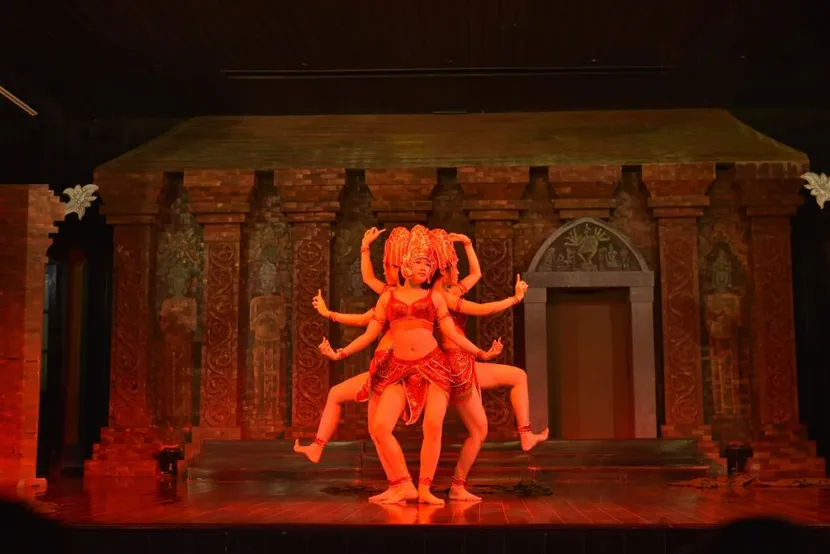
Watching the Apsara dance is an unforgettable experience.
4.3. How to Get to My Son Sanctuary from Da Nang and Hoi An
Situated just 40 km southwest of Hoi An and 69 km from Da Nang downtown, the site is easily accessible by road from either city. Transportation options include taxis, buses, and motorbike rentals, making it convenient for both independent travelers and tour groups.
From Da Nang to My Son Sanctuary:
Option 1: Private Car or Taxi
- Time: ~1.5 hours
- Cost: $40–$55 round trip (depending on negotiation or service)
- Convenience: Most comfortable, ideal for groups or families
- Note: Ask the driver to wait or book for a return
Option 2: Motorbike Rental
- Time: ~1.5–2 hours
- Cost: ~$7–$10/day for rental and fuel
- Route: You drive via DT610, through Nam Phuoc town to reach My Son.
- Ideal for: Adventurous travelers; roads are scenic but narrow in parts
- Tip: Use Google Maps and leave early to avoid the midday heat
Option 3: Guided Tour from Da Nang
- Time: Half-day to full-day tour
- Cost: ~$40–$70 per person (includes transport, guide, entry fees)
- Inclusions: English-speaking guide, hotel pickup, entrance ticket
- Best for: First-time visitors or history enthusiasts
From Hoi An to My Son Sanctuary:
Option 1: Private Car or Taxi
- Time: ~1–1.25 hours
- Cost: ~$25–$35 round trip
- Convenience: Most hassle-free; especially recommended if visiting in a group or with children
Option 2: Motorbike
- Time: ~1–1.5 hours
- Cost: ~$5–$7/day for rental + fuel
- Route: Hoi An → Nam Phuoc → My Son (via DT610)
- Tip: Early morning ride offers cooler temperatures and lighter traffic
Option 3: Group or Private Tour from Hoi An
- Time: Usually departs around 7:30–8:00 AM and returns around 1:00–2:00 PM
- Cost: ~$25–$55 depending on group size and inclusions
- Extras: Includes guide, entry ticket, and sometimes lunch or cultural performances
4.4. Practical tips for visitors
My Son Sanctuary is a sacred historical site located in Vietnam, a tropical country known for its distinct weather conditions. Before your visit, it's important to be aware of certain customs, safety precautions, and local etiquette. Below are some practical tips to help you make the most of your experience.
First and foremost, it is crucial to respect the sacredness of My Son Sanctuary. This site holds great significance for the Cham people, and it would be disrespectful to act rudely or disregard their customs. If you are unsure about what is appropriate, consider hiring a private tour guide who can help you navigate the norms.
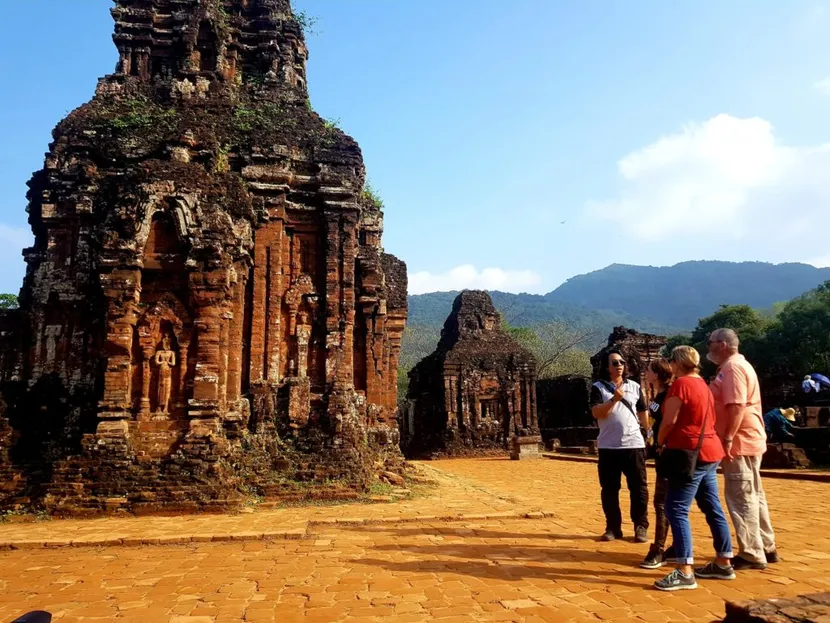
If you are unsure about what is appropriate in My Son Sanctuary, consider hiring a private tour guide.
The tropical climate means high temperatures and strong UV rays, especially from late morning to mid-afternoon. To protect yourself from sunburn or heat exhaustion, apply sunscreen before your visit and wear a hat, sunglasses. The best time to visit My Son sanctuary is early in the morning(6:30–9:00 AM) when the gates open, however, this is also a popular time for tourists. You may want to consider visiting in the late afternoon (after 3:30 PM) when the crowds have thinned out.
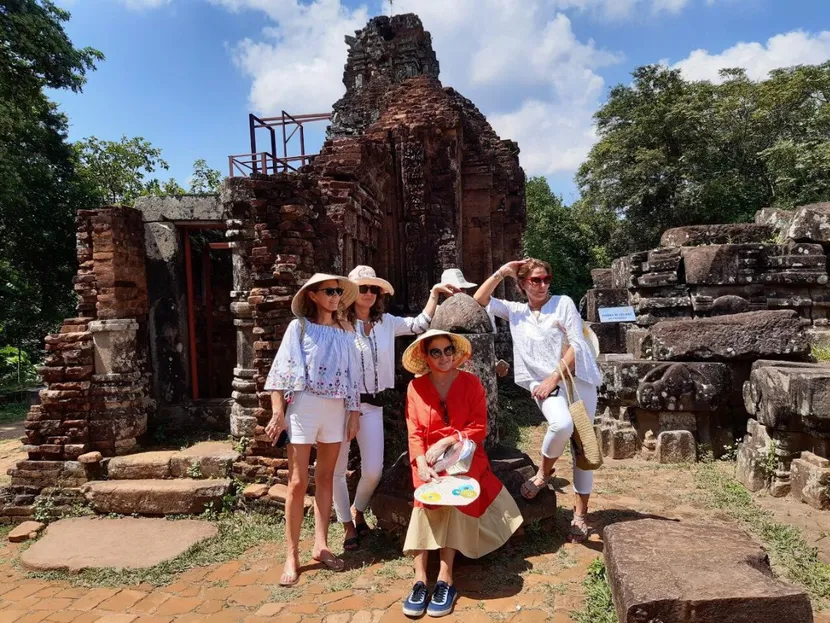
Visitors may find it challenging to cope with the scorching sun during summer day.
While many locals wear long-sleeved clothing to shield themselves from the sun, visitors should prioritize comfort and mobility. Be sure to wear comfortable walking shoes, lightweight and breathable clothing.
Finally, it is crucial to be aware of the potential dangers that still exist in the area. Due to the war, there are maybe still unexploded ordnance hidden beneath the surface. To stay safe, stick to designated trails and avoid wandering off the beaten path.
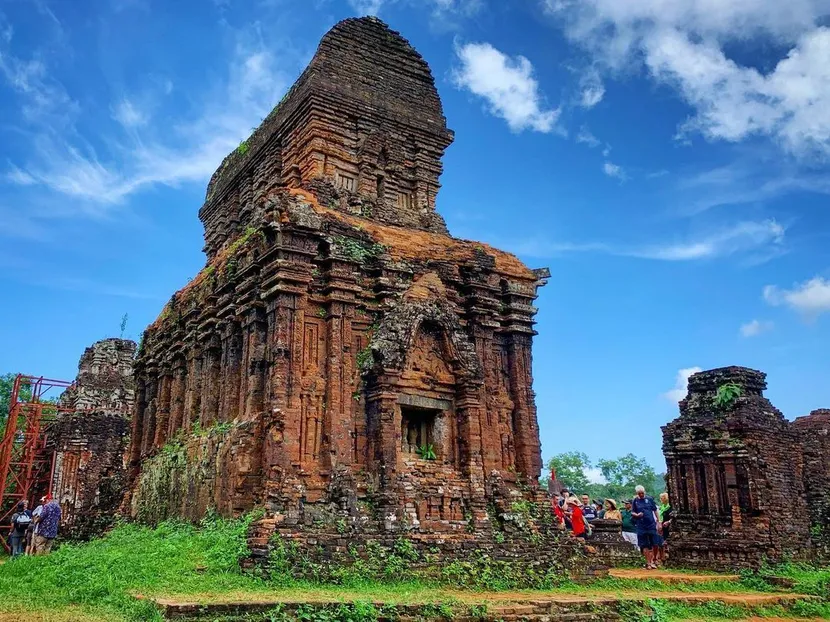
5. FAQs
Q: What is My Son Sanctuary?
My Son Sanctuary is a collection of ancient Hindu temples located near Hoi An in central Vietnam. Built by the Champa civilization, the site is now open to visitors and offers a unique glimpse into the region’s cultural and religious history.
Q: Is My Son Sanctuary a World Heritage Site?
Yes, My Son Sanctuary was recognized as a UNESCO World Heritage Site in 1999. It is considered one of the best-preserved monuments of the Champa people and reflects their unique culture, heavily influenced by Indian religious values, particularly the worship of Shiva, Krishna, and Vishnu.
Q: Is it worth visiting My Son Sanctuary?
Absolutely! A visit to My Son Sanctuary offers a captivating journey into Vietnam’s ancient heritage. The site’s well-preserved temples and spiritual atmosphere make it a remarkable experience, distinct from other destinations in the country.
Q: What are the operating hours of My Son Sanctuary?
The sanctuary is open daily from 6:00 AM to 5:00 PM, including holidays and New Year's Eve.
Q: Is there a My Son Sanctuary entrance fee?
Yes, the entrance fee is 150,000 VND (approximately US$6.43) per person. This includes access to the sanctuary, the Champa Museum, and a 2-kilometer electric shuttle ride from the entrance to the main temple complex.
The My Son Sanctuary stands as a remarkable testament to the architectural, cultural, and religious legacy of the Cham civilization. As a designated UNESCO World Heritage Site, it features ancient temples, intricate carvings, and an atmosphere that immerses visitors in a bygone era. With the detailed information and travel tips we've provided, you're all set to plan a rich and rewarding visit to this historic site. Have questions or insights to share? We'd love to hear from you, kindly leave a comment below!
Don’t forget to contact IZITOUR for personalized travel advice, tour arrangements, or any assistance you may need. You can also email us at [email protected] for prompt support.
Read more:







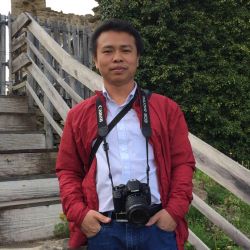

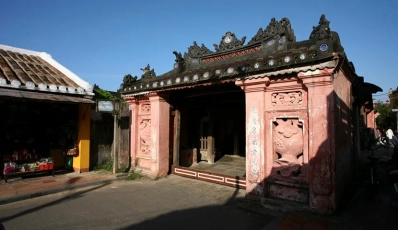
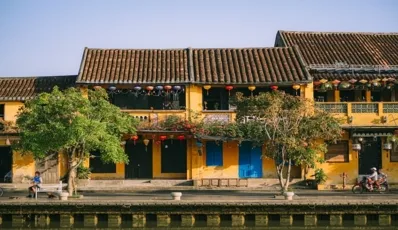
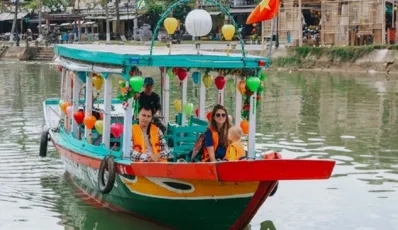
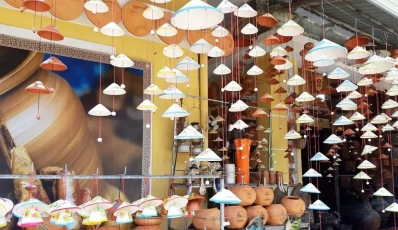
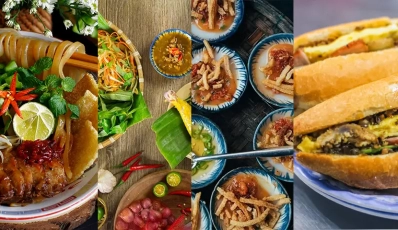



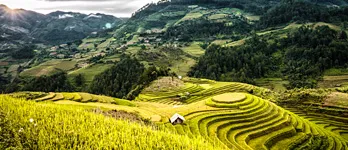
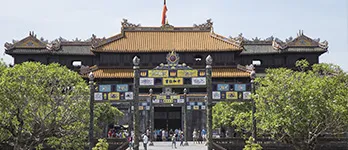
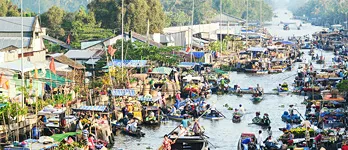

 TRAVELERS' CHOICE 2025
TRAVELERS' CHOICE 2025 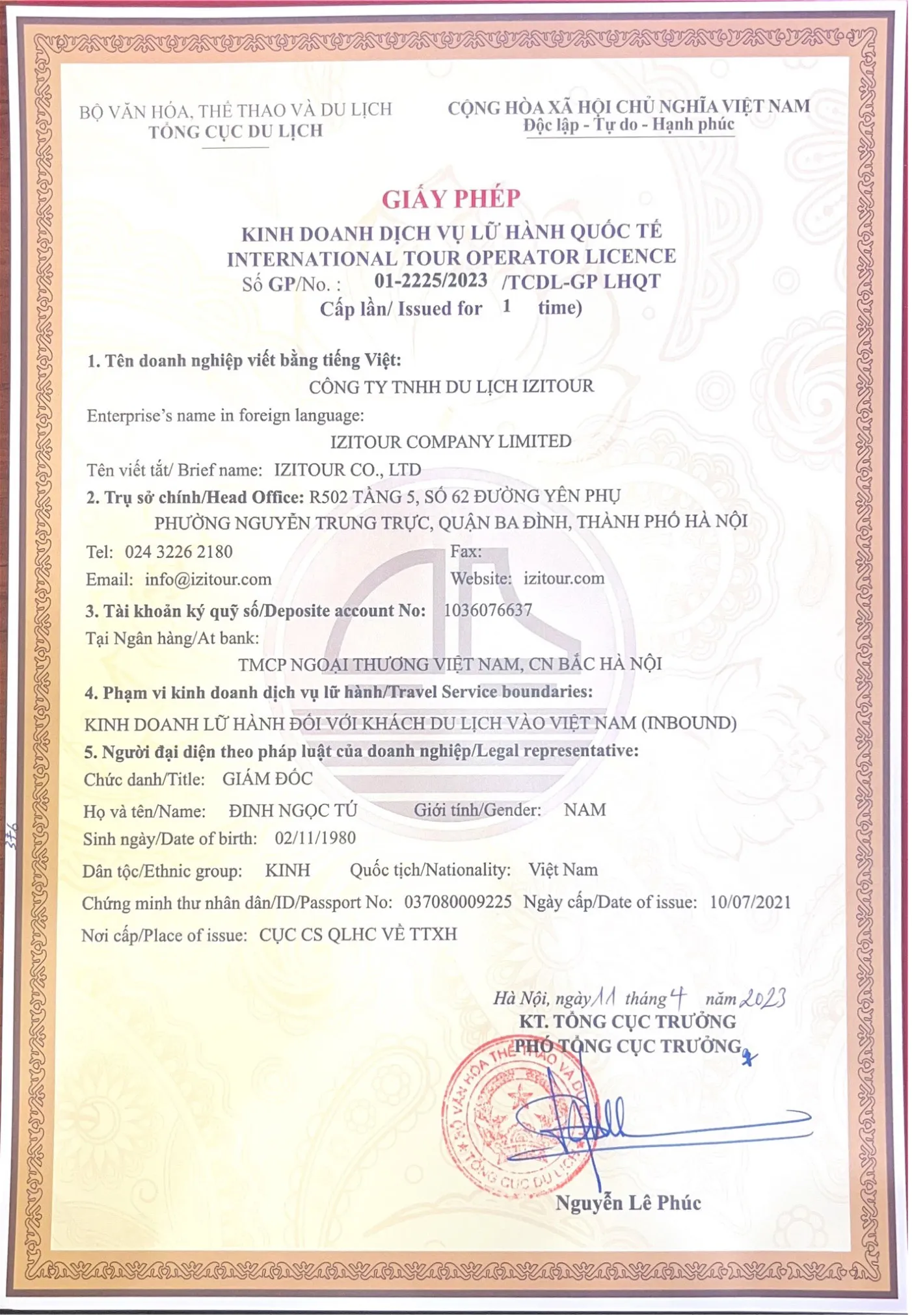



02 Comments
Mauritius
Hi how long does it take for a My Son tour. We will be stay in Hoi An town.
Vietnam
Write Reply